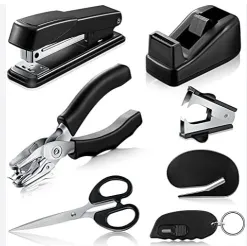In the world of woodworking and DIY projects, having the right tools is essential for success. When it comes to precision cutting and intricate designs, a quality jig saw can make all the difference. For those in Pakistan looking to shop for jigsaws, navigating the market can be overwhelming. But fear not, as we're here to guide you through the process step by step.
Getting Started: Understanding Jig Saws
Jig saws, also known as saber saws, are versatile power tools designed for cutting various materials in intricate patterns. From straight cuts to curves and bevels, these handy tools offer flexibility and precision, making them a must-have for any workshop or toolbox.
Exploring Different Types of Jigsaws
Corded vs. Cordless Jig Saws
Corded JigSaws: These models are powered by electricity and provide consistent power, making them ideal for heavy-duty tasks that require continuous use.
Cordless Jig Saws: Offering portability and freedom of movement, cordless jig saws are powered by rechargeable batteries, making them suitable for remote job sites or areas without access to power outlets.
Orbital vs. Pendulum Action
Orbital Action: This feature allows the blade to move forward and upward in a circular motion, resulting in faster cuts and smoother finishes, especially on wood.
Pendulum Action: This action adds a swinging motion to the blade, increasing cutting speed but sacrificing some finesse. It's ideal for rough cuts or thick materials.
Key Features to Consider
Blade Type and Change Mechanism
T-Shank vs. U-Shank Blades: T-shank blades are more common and offer tool-less blade changes for convenience. U-shank blades require tools for replacement but may provide better stability.
Variable Speed Control
Having control over the cutting speed allows for greater versatility, enabling users to adjust the tool's performance based on the material and cutting task at hand.
Choosing the Right Jig Saw for Your Needs
Ergonomics and Comfort
A comfortable grip, balanced weight distribution, and ergonomic design are crucial for reducing fatigue during prolonged use and ensuring precise control over the tool.
Dust Management System
Look for jig saws equipped with effective dust collection systems to keep your work area clean and minimize respiratory hazards.
FAQs (Frequently Asked Questions)
What materials can I cut with a jigsaw?
Jig saws can cut a wide range of materials, including wood, metal, plastic, laminate, and ceramic tile.
Do I need special blades for different materials?
Yes, different materials require specific blade types. Consult the manufacturer's recommendations for optimal results.
Can I use a jigsaw for straight cuts?
While jigsaws excel at curved and intricate cuts, they can also be used for straight cuts with the help of a guide or fence.
How do I maintain my jig saw for optimal performance?
Regular cleaning, blade lubrication, and proper storage are essential for maintaining your jig saw's performance and longevity.
Are there safety precautions I should take when using a jigsaw?
Absolutely. Always wear appropriate safety gear, such as goggles and gloves, and follow the manufacturer's instructions for safe operation.
Where can I buy quality jigsaws in Pakistan?
You can find a wide selection of jig saws at Purchaser, offering competitive prices and reliable customer service.
Conclusion
Choosing the right jigsaw is a crucial decision for any woodworking enthusiast or professional tradesperson. By understanding your needs, considering key features, and exploring different options, you can make an informed decision that will enhance your projects and productivity.


 Login with Google
Login with Google